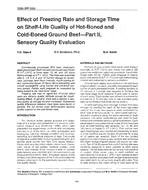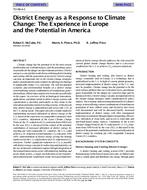Click here to purchase
In this paper, the influence of the ventilation rate, vent size, and position of the inlet and outlet on indoor air conditions and on the heat and moisture transport through the envelope are investigated by an experiment-based numerical model. The testing is the extension of an experimental project carried out within International Energy Agency (IEA) Annex 41. The numerical model simulates one test scenario and compares its simulated profile of the indoor temperature and relative humidity with experimental measurements. Close agreement has been obtained. Simulation results show that the position of the ventilation vents has the most significant effect on the indoor environment. The increased ventilation rate carries away more heat and moisture, thus reducing both temperature and moisture levels inside the room. Vent size has the least effect on the indoor environment. Under the mixed convection condition, the indoor temperature and moisture levels, which depend on the ventilation conditions, dominate the heat and moisture transport through the wall system. This investigation is achieved in a single simulation environment: COMSOL, where the CFD and mass transport in the wall is coupled directly. This paper presents the coupling of the momentum, heat, and moisture in the whole simulation domain, including the test room and wall system, with some assumptions.
Citation: Thermal Performance, International Conference, 2010
Product Details
- Published:
- 2010
- Number of Pages:
- 9
- File Size:
- 1 file , 2.6 MB
- Product Code(s):
- D-BUILDINGSXI-161


